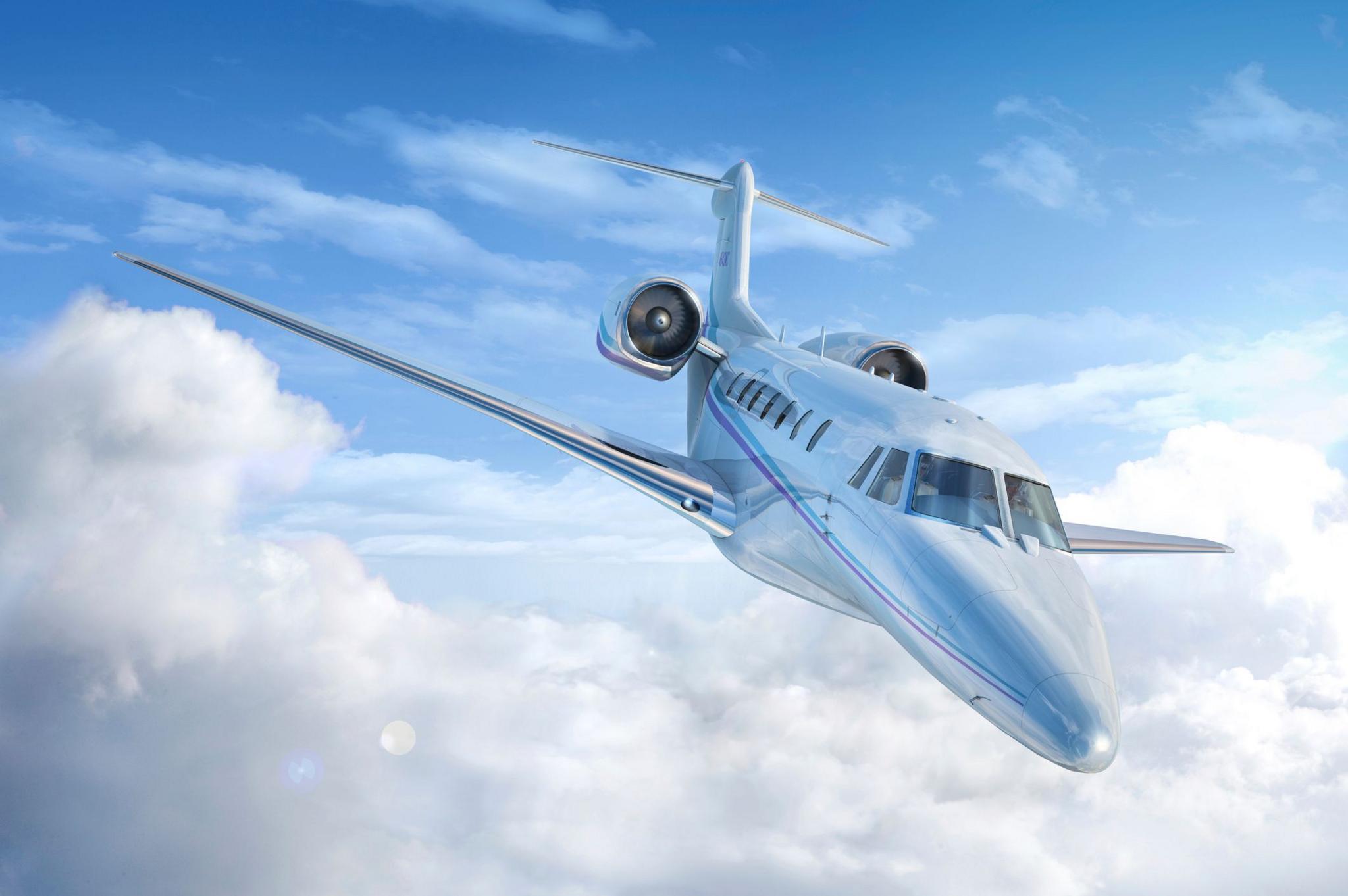Ultra-rich using jets like taxis, climate scientists warn

- Published
The mega-rich are using private jets like taxis, warn climate scientists who tracked flights to calculate the planet-warming gases they release.
The scientists worked out that the carbon dioxide emissions, which contribute to climate change, rose by 46% between 2019 and 2023.
Researchers traced all private flights globally, including summer weekend trips to Ibiza, Spain and travel to the Fifa World Cup and the UN climate conference in Dubai.
Flying in a private jet for a single hour can release more carbon dioxide into the atmosphere than the average person produces in a year, according to the research team.
“There are a lot of people using these aircraft as taxis, where you cover whatever distance by aircraft simply because it's more convenient,” Professor Stefan Gossling, from Sweden's Linnaeus University, who led the research, said.
“If somebody’s flight emits in one hour as much as an average human being emits in a year - just to watch a soccer game - then perhaps it shows those people think they are outside the standards that we have as a global community.”
In 2023, private flights produced an estimated 15.6 million tonnes of carbon dioxide - the equivalent of 3.7 million petrol cars being driven over the course of a year, external - according to the research.
Overall, that is small compared to global carbon emissions. It represents about 1.8% of emissions from all air travel, and aviation is 4% of global emissions.
Prof Gossling said the emissions “might not seem much, but this is a tiny fraction of humanity and each of these individuals in a year is emitting more than a small city in central Africa” by travelling in private jets.
Each human produces about 4.3 tonnes of carbon dioxide every year, on average - but in central Africa, this falls to as low as 0.1 tonnes.
The 46% increase in emissions by private jets is probably due to rising demand and the limitations on commercial travel caused by the Covid pandemic.

People who fly in private jets are typically among the richest in the world, sometimes referred to as “ultra-high-net-worth” individuals.
The group is estimated to comprise about 256,000 people, 0.003% of the global adult population, each owning an average of $123m (£95m), according to the scientists.
The team mapped the flight routes of a number of internationally recognised figures, named in the report as only “renowned actors, singers, and directors”.
One travelled by private jet 169 times in 2023, emitting an estimated 2,400 tonnes of carbon dioxide - the equivalent of driving 571 petrol cars throughout the year.
The scientists chose not to name individuals, making clear they did not wish to point the finger at any one person.
Most of the aircraft were registered in the US (69%), followed by Brazil, Canada, Germany, Mexico and the UK.
Many of the flights were for leisure or events such as film festivals and football matches, according to the researchers.
And 47.4% were less than 500km (300 miles).
Private flights to Ibiza, Spain and Nice, France peaked in summer, with arrivals and departures concentrated on the weekends.
The 2022 Fifa World Cup coincided with 1,846 jets arriving in Qatar, generating an estimated 14,700 tonnes of carbon dioxide.
The team also discovered 291 private planes landed in the United Arab Emirates at the time of the UN climate conference in Dubai, in 2023, generating 1,500 tonnes of carbon dioxide.
Prof Gossling said those flights were probably for very wealthy business people travelling to the climate conference.
The research did not include heads of states or politicians, who are more likely to fly in chartered rather than privately owned planes.
The researchers calculated the emissions from 18,655,789 flights by looking at the time in the air and average fuel consumption of the aircraft models.
The tracking information is available on flight-tracking portal ADS-B Exchange, which Prof Gossling deemed the most reliable tracker of this type of data.
“In 10 years, people will wish we had done a lot more in order to stop climate change," Prof Gossling said.
"We need to cut down on certain activities and we need to start at the top in order to make the statement that everybody has a role in cutting down emissions."
Without action, the world could warm by 3.1C this century, a recent UN report found. It is already 1.2C above pre-industrial levels.
And by 2050, emissions from commercial travel are predicted to increase to more than 2.5 times the level in 2021., external
The International Air Transport Association has committed to making global aviation net-zero by 2050.
But many scientists remain unconvinced there is a clear alternative to traditional fuel that would allow air travel to increase without releasing more planet-warming gases.
The research is published in the scientific research journal communications earth & environment.

Sign up for our Future Earth newsletter to get exclusive insight on the latest climate and environment news from the BBC's Climate Editor Justin Rowlatt, delivered to your inbox every week.
Outside the UK? Sign up to our international newsletter here.